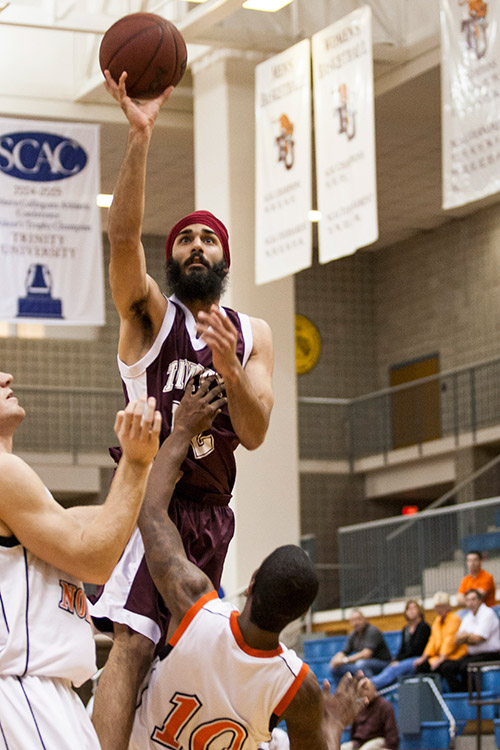10 pieces from Beyond Bollywood you might be surprised to see

It’s finally here! Beyond Bollywood opens this week at the National Museum of Natural History, and with the exhibition catching more and more eyes from the public, we’ve become keenly aware of the assumptions and expectations people might have of this enormous project. Something like an exhibition on the Indian American experience is indeed vast, and with only 5,000 square feet, it’s obvious that we can’t even come close to encompassing everything.
Still, we tried.
Here are 10 pieces you’ll find at Beyond Bollywood that might surprise you. At the very least, they embody our idea of being beyond:
#1: Rappers

Chee Malabar. Photo by Preston Merchant
Ahem – excuse me – I mean, emcees. As hip hop has become a ubiquitous genre of music, Indian Americans have created a formidable presence. Some of these artists include Chee Malabar (pictured above), Karmacy, and A-Live. Find them in the Hip Hop Activism section of Beyond Bollywood.
#2: LGBT Rights Activists

SALGA (South Asian Lesbian and Gay Association) has played a significant role not only for the rights of South Asian Americans, but for human rights movements as a whole. At Beyond Bollywood, you’ll find this image along with some photos from Transgender Day of Remembrance 2012 in the Activism section.
#3: Multiracial families

Courtesy of The Bancroft Library, University of California, Berkeley
Some of the earliest immigrants from India settled along the west coast, Harlem, West Baltimore, and Tremé in New Orleans, marrying into Creole, Puerto Rican, and African American communities. Above is a photo of Puna Singh and his sons, one of the many Indian Mexican American families that resided in California in the early 20th century. Find more in The Great Melting Pot and Family Portraits.
#4: Feminist Art

Anjali Bhargava and Swati Khurana, Most Apprehensive Fiancé, 2007
Like many other Asian Pacific American communities, Indian American women are often stereotyped as quiet, subservient, and docile. In Beyond Bollywood, we counter this narrative with a collection of artwork created by some of today’s leading Indian American women in the arts. The piece above is from Anjali Bhargava and Swati Khurana‘s “Unsuitable Girls” Series, located in our section Desis: United We Stand. You’ll also find pieces from Desis Rising Up and Moving (Drum) and a quote from poet Shailja Patel.
#5: Athletes

Indian American athletes aren’t anomalies or benchwarmers. In fact, our collection includes Super Bowl champ Brandon Chillar, gymnastics Olympic medalist Mohini Bhardwai, and 2004-2008 co-captain for the Trinity University basketball team, Darsh Singh – who petitioned for the right to wear his turban, which was against the NCAA’s no-headgear policy. Find more in our Groundbreakers section.
#6: An Astronaut
What says “Beyond” better than outer space? At Beyond Bollywood you’ll also find Kalpana Chawla, the first Indian American to leave orbit. Many more unexpected Indian American professionals also in our Groundbreakers section.
#7: Christians

Indian American Christians, from the “Religion” section of Beyond Bollywood
Indian Americans are comprised of communities from throughout South Asia, who speak a multitude of languages and worship in a diversity of different ways. In our Religions section, you’ll find photos of Indian Americans observing spirituality as Buddhists, Christians, Jains, Jews, Hindus, Muslims, Sikhs, Zoroastrians, atheists and agnostics.
#8: Civil Rights Activists

Indian Youth Against Racism. Photo by Corky Lee
Although Indian Americans have suffered prejudice – from early immigration all the way to post-9/11 discrimination – there’s also a strong narrative of anti-racist activism embedded in the narrative. Throughout Beyond Bollywood you’ll find photos, artifacts, and stories documenting this fight for justice – from Bhagat Singh Thind, who stood in front of the U.S. Supreme Court multiple times to gain citizenship – to Indian Youth Against Racism, who helped defeat the efforts of the anti-Indian Dotbusters.
#9: Non-Indians

President Barack Obama and First Lady Michelle Obama pose for photos with Vice President Joe Biden and Dr. Jill Biden before the National Governors Association Dinner, in the Blue room of the White House, Sunday, Feb. 26, 2012. (Official White House Photo by Lawrence Jackson)
One of the most amazing aspects of Beyond Bollywood is its demonstration of how Indian American history and culture plays a role in the lives of Americans of all backgrounds. From the Chinese American railroad workers who worked alongside Punjabi Americans in the late 1800’s to First Lady Michelle Obama who’s pictured above in a dress designed by Naeem Khan, Indian America has literally been woven into the fabric of American culture.
#10: The Undefined and the Self-Defined

D’Lo. Photo by Sabelo Narasimhan
One of the messages in Beyond Bollywood is that Indian American identities and narratives can be fluid – oftentimes getting messy when we confine ourselves to descriptors. Take D’Lo, featured in the Hip Hop section, who is self-described as a “queer transgender Tamil Sri L.A.nkan-American, political theatre artist/writer, director, comedian and music producer.” While D’Lo is Sri Lankan American, D’Lo’s work is part of a larger South Asian American dialogue in hip hop which Indian American play a crucial role in. D’Lo’s work has been shown throughout the U.S. as well as Sri Lanka and India, and often addresses the delicate balance within frames of identity.
Admittedly, we would never be able to include every single story, individual or experience in one exhibition – no matter how big it was. Still, with Beyond Bollywood our hope is to find the fine balance between illustrating how Indian American experiences are unique and groundbreaking, while also sharing a commonality with the larger American community. There will undoubtedly be some to visit the exhibition and leave feeling like more could’ve been told – and that’s the point of all of this.
We invite you to experience Beyond Bollywood, and play a role in the exhibition’s evolution.

–Adriel Luis
Curator of Digital & Emerging Media
Smithsonian Asian Pacific American Center



Discussion